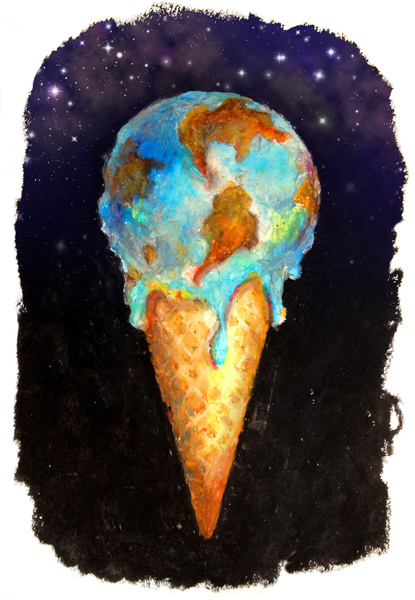 Overcast with hanging ground fog this afternoon on California’s north coast, and chilly, too — local temperatures reportedly hovering in the mid-50s, but the air feels moist and cold.
Overcast with hanging ground fog this afternoon on California’s north coast, and chilly, too — local temperatures reportedly hovering in the mid-50s, but the air feels moist and cold.
Totals for November rainfall from the NWS, and my little area down from the monthly average (76 percent of normal), but a way-shitload more than last year (5.11 inches last month, 1.70 inches, November 2013).
Drought-wise, a real-good thing.
Living this close to the beach, things relating to ocean plays a part. And the oceans are getting pretty fucked. Right here at home, too, as the Pacific West Coast currently has a virus running rampant on the sea star, ‘star fish,’ population, causing the creatures to literally “melt away” into white goo (my last post on the subject here).
The oceans/seas are forewarning.
(Illustration above found here).
As we humans continue to pump out great chunks of CO2, oceans suck-up about one-quarter of that carbon dioxide, which could reduce the amount of heat building in the atmosphere, but it plays like shit in the water — ocean acidification is the result of all that CO2 being absorbed by seawater. This process is playing havoc with mussels, shrimp, Pacific oyster, and numerous others, dying out. And so it is with coral reefs — a double-whammy.
Andrew Freedman at Mashable looks at some study results on the “bleaching” of coral:
In 1998, one of the most powerful El Niño events on record sent Pacific Ocean temperatures soaring to such heights that almost 20 percent of the world’s coral reefs experienced significant bleaching.
Some of the reefs have never fully recovered from that episode.
Now, more than 16 years later, global warming appears to be doing what it used to require a super El Niño to do — push ocean temperatures so high across the Pacific Ocean that it sets off a major coral bleaching event, scientists warned Monday.
Coral reefs, vital marine ecosystems which are home to 25 percent of the world’s marine life and help provide food and livelihoods for millions of people, may be heading into one of the largest coral bleaching events on record, due to record warm ocean temperatures.
This year is virtually guaranteed to set the record for the warmest year since instrumental records began in 1880, largely due to record high global ocean temperatures.
…
Researchers monitoring the health of coral reefs around the world are sounding the alarm.
“As the ocean becomes more acidified the bleaching threshold for corals drops, more carbon dioxide makes corals more sensitive to thermal stress,” says Mark Eakin, coordinator of the National Oceanic and Atmospheric Administration’s (NOAA) Coral Reef Watch program, in an interview.
“Not only are we seeing more thermal stress … but we’re making them more sensitive at the same time.”
…
This year has been anything but average for ocean temperatures, particularly across the Pacific, where the worst coral bleaching events have been seen so far.
Global average ocean temperatures were the warmest of any month on record in September.
Temperatures were so warm during that month that it broke the all-time record for the highest departure from average for any month since 1880, at 1.19 degrees Fahrenheit above average.
August and June also set records for the warmest ocean temperatures on record, and the year is expected to set a similar milestone.
The fact that this warmth is occurring without a declared El Niño — though a weak event is predicted for this winter — strikes climate scientists as a clear sign that we’re now living in a new era with added heat in the climate system, making temperatures such as we’ve seen in 2014 easier to reach.
Another good story on the coral “bleaching” can also be found at Discovery.
And also on the coral front, another new study on ocean winds and where will all that saltwater heat go?
From Climate Central yesterday:
Chemical clues in skeletons produced by coral growing at Kiribati contain a newly discovered warning.
They caution of a global climate system that’s capable of drawing decades’ worth of hoarded heat out of the Pacific Ocean, and belching it back into the atmosphere.
A cryptic chemical weather log kept by Tarawa Atoll’s stony coral in the tropical Pacific archipelago has been cracked, helping scientists explain a century of peaks and troughs in global warming — and inflaming fears that a speedup will follow the recent slowdown.
…
The coral-based findings, published Monday in Nature Geoscience, provide new historical data supporting previous modeling results and observations that point to the long-term waxing and waning pattern of the trade winds in affecting worldwide temperatures.
…
Diane Thompson, a postdoctoral fellow at the National Center for Atmospheric Research who led the study published Monday, said we’re in a surface warming slowdown right now because the Pacific trade winds are strong.
But she says that apparent bout of good fortune won’t last forever.
“When winds weaken, which they inevitably will, warming will once again accelerate,” Thompson said.
“The warming caused by greenhouse gases and the warming associated with this natural cycle will compound one another.”
Another warning bleached…and sea stars singing good-bye.
(Illustration out front found here).